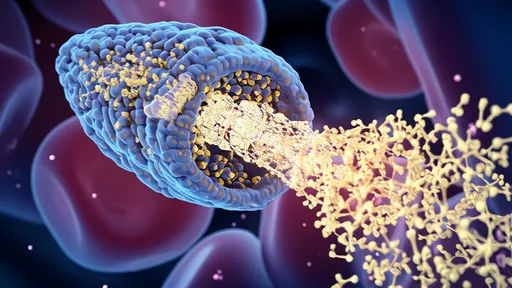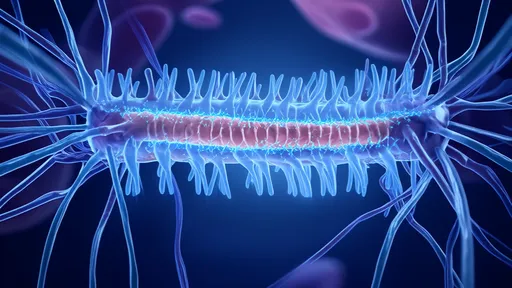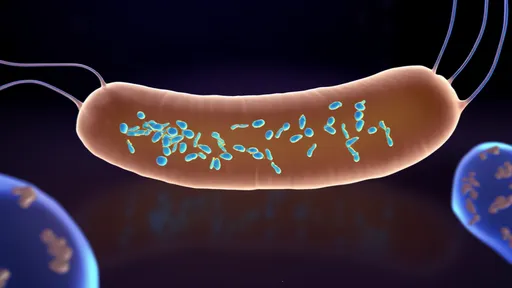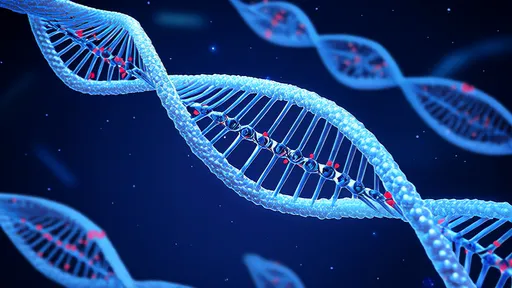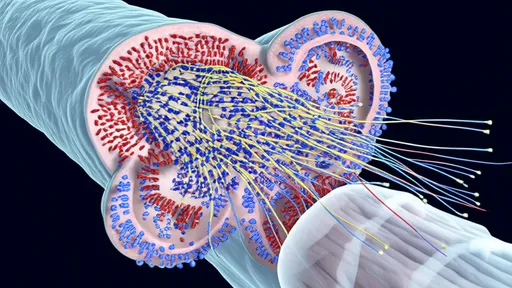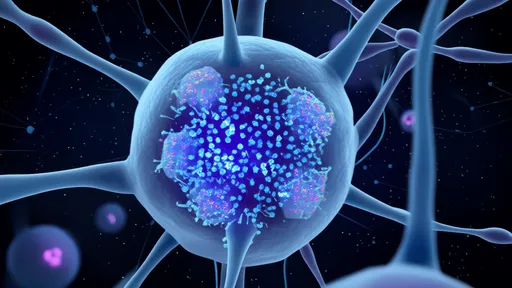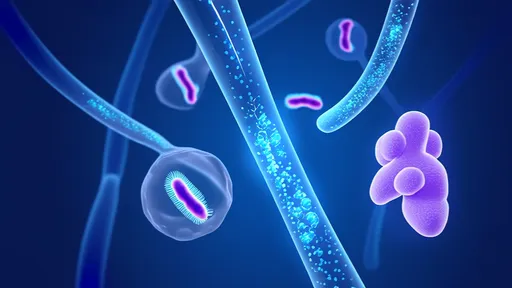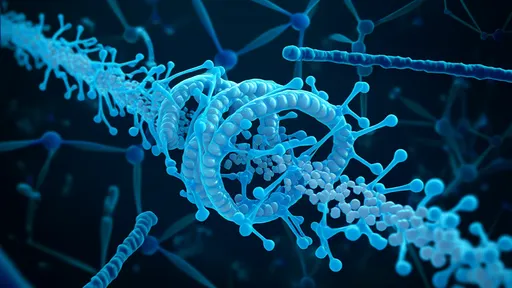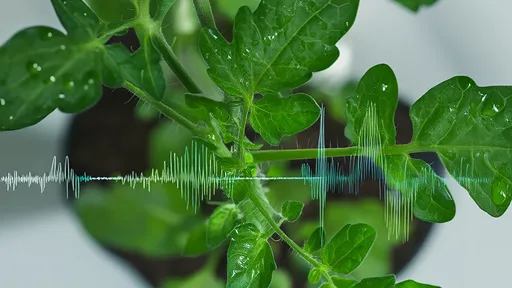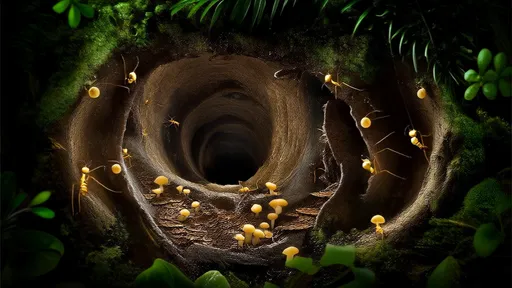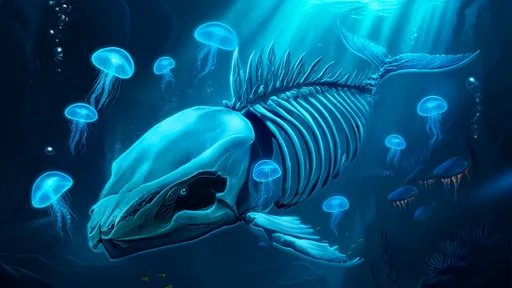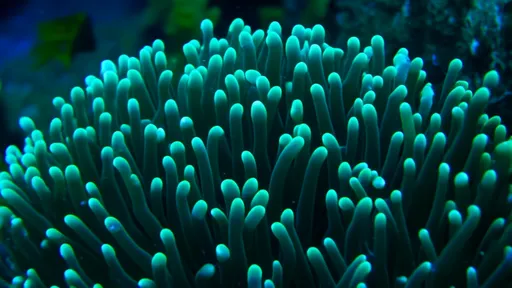In a groundbreaking discovery that blurs the line between botany and acoustics, researchers have uncovered evidence of tomatoes employing ultrasonic warfare against herbivorous insects. The study, published in Nature Plants, reveals how tomato plants emit high-frequency sounds when under attack - not as passive victims, but as active participants in their own defense.
The research team from the University of Turin discovered that tomato plants produce distinct ultrasonic frequencies between 35-65 kHz when caterpillars begin feeding on their leaves. These sounds fall well above human hearing range (which typically tops out around 20 kHz) but are clearly audible to many insect species. What makes this finding extraordinary isn't just that plants make sounds - but that these sounds appear to serve as precise acoustic deterrents.
Using laser vibrometers and ultrasonic microphones in controlled laboratory conditions, scientists mapped the complete frequency spectrum of these plant emissions. The resulting acoustic fingerprint shows peak activity at 48.7 kHz - a frequency that laboratory tests demonstrated causes measurable distress in three common tomato pests: the cotton bollworm (Helicoverpa armigera), the tomato fruitworm (Heliothis zea), and the beet armyworm (Spodoptera exigua).
Further experiments revealed an even more sophisticated defense mechanism. The ultrasonic emissions aren't constant, but rather pulse in rhythmic patterns that match the feeding vibrations of attacking insects. This suggests tomatoes can detect specific pests through vibrational cues and respond with tailored acoustic countermeasures. "It's as if the plant recognizes its attacker and chooses the right 'song' to drive it away," explains lead researcher Dr. Elena Verdú.
The biological mechanism behind this phenomenon involves rapid vibrations of specialized cells in the plant's vascular tissue. When leaf damage occurs, biochemical signals trigger these cells to vibrate at ultrasonic frequencies - essentially turning the plant's stem into a natural piezoelectric speaker. This process consumes significant energy, which explains why tomatoes only activate it when truly threatened.
Agricultural implications of this discovery could be revolutionary. Traditional pesticides often fail as insects develop resistance, while indiscriminately harming beneficial species. By contrast, ultrasonic plant defense offers a targeted, chemical-free alternative. Researchers are already experimenting with broadcasting recorded tomato frequencies in organic farms, with preliminary results showing 40-60% reduction in pest damage without any pesticide use.
Interestingly, the study also found that some predatory wasps - natural enemies of tomato pests - are attracted to these same ultrasonic frequencies. This suggests tomatoes may be performing double duty: repelling harmful insects while summoning their bodyguards. Such elegant ecological harmony could inspire entirely new approaches to sustainable agriculture.
As research continues, scientists are compiling an "acoustic encyclopedia" of plant defense frequencies. Early indications suggest tomatoes aren't alone - peppers, eggplants, and potatoes show similar capabilities. Each species appears to have its own distinctive ultrasonic signature, hinting at an entire unseen world of plant communication we're just beginning to decipher.
The discovery also raises philosophical questions about plant intelligence. While no one suggests tomatoes "think" in any human sense, their ability to detect threats, distinguish between attackers, and launch precise countermeasures demonstrates a sophisticated form of biological programming that challenges our traditional definitions of awareness. As Dr. Verdú notes, "We may need to reconsider what 'behavior' means when it doesn't involve nerves or muscles."
For farmers and ecologists, the practical applications are more immediate. Portable ultrasonic emitters tuned to specific crop frequencies could become standard equipment in organic farming. Plant breeders might select varieties not just for yield or taste, but for their acoustic defense potency. Some researchers even speculate about genetically enhancing this natural ability, creating crops that sing louder and clearer to protect themselves.
As with any major discovery, new questions abound. How do pest populations adapt over time? Do beneficial insects ever suffer collateral damage? Can ultrasonic defenses work against sucking insects like aphids, or only leaf-chewing caterpillars? The research team plans to expand their studies to field conditions and commercial-scale applications over the next three years.
One thing is certain: the quiet green world around us is far noisier than we ever imagined. Those silent tomatoes on the vine? They're actually engaged in high-pitched battles we're only now learning to hear. As this research develops, we may find that plants have been solving pest problems with sound for millions of years - and we're just late to the conversation.
For decades, the blood-brain barrier (BBB) has stood as a formidable gatekeeper, selectively shielding the brain from harmful substances while frustrating efforts to deliver life-saving therapeutics. This biological fortress, while essential for protecting our most vital organ, has rendered many promising treatments for neurological disorders ineffective. Now, a groundbreaking approach combining protein engineering and artificial intelligence is cracking the code to safe BBB penetration, potentially revolutionizing treatment for Alzheimer's, Parkinson's, and brain cancers.
In a groundbreaking development that could revolutionize the treatment of spinal cord injuries, researchers have successfully engineered hydrogel-based optical fibers capable of mimicking neural pathways. These "neural optical fibers" represent a fusion of advanced materials science and neurobiology, offering new hope for patients with previously untreatable damage to their central nervous system.
In a groundbreaking discovery that could revolutionize our approach to plastic waste, scientists have identified a surprising ally in the fight against polyethylene pollution: the humble wax worm. More specifically, the bacteria residing in the gut of these caterpillar-like creatures have demonstrated an extraordinary ability to break down one of the world's most stubborn plastics. This finding opens new avenues for tackling the global plastic crisis through biological means.
In a groundbreaking development that challenges our understanding of aging, scientists have demonstrated the potential to reverse cellular aging through a technique called transient reprogramming. This approach temporarily rewinds the epigenetic "clock" of cells without erasing their identity, opening new possibilities for regenerative medicine and age-related disease treatment.
In a groundbreaking leap for precision medicine, researchers have unveiled a light-controlled CRISPR delivery system using DNA-origami "nanodrones" – a fusion of nanotechnology and gene editing that promises unprecedented control over therapeutic targeting. This innovation, emerging from a collaboration between bioengineers and geneticists, reimagines drug delivery by combining the programmability of DNA nanostructures with the spatial precision of optogenetics.
In a groundbreaking study that could reshape our understanding of consciousness, neuroscientists have identified the thalamic reticular nucleus (TRN) as a potential "rhythmic switch" governing wakefulness through gamma wave modulation. This almond-shaped inhibitory structure, often described as the brain's gatekeeper, appears to orchestrate states of awareness by tuning neural oscillations like a conductor leading a symphony of consciousness.
For decades, chronic pain has remained one of medicine's most elusive challenges – a complex interplay of biological, psychological, and social factors that often defies conventional treatment. Now, groundbreaking research into the spinal cord's neural "fingerprints" of pain is revolutionizing our understanding of how persistent pain becomes etched into the nervous system. Scientists are mapping specialized neural circuits that appear to encode chronic pain with remarkable specificity, opening new avenues for targeted therapies.
In a groundbreaking discovery that reshapes our understanding of brain metabolism, researchers have identified glial cells as the unsung architects of neuronal energy distribution. The study reveals how these long-overlooked support cells orchestrate the precise mitochondrial allocation to neurons, challenging the neuron-centric dogma of neuroscience. This paradigm shift underscores glial cells' role as metabolic conductors in the symphony of brain function.
Scientists have uncovered a startling new pathway by which gut microbes communicate with the brain at lightning speed. Dubbed the "10-second gut-brain superhighway," this discovery centers on the vagus nerve's ability to transmit microbial signals faster than previously thought possible. The findings could revolutionize our understanding of conditions ranging from depression to irritable bowel syndrome.
In a groundbreaking discovery that bridges molecular biology and neuroscience, researchers have uncovered how the CPEB protein acts as a "molecular glue" to solidify long-term memories through an elegant phase transition mechanism. This finding not only revolutionizes our understanding of memory persistence but also reveals nature's ingenious solution to maintaining information at the molecular level.
In a groundbreaking discovery that blurs the line between botany and acoustics, researchers have uncovered evidence of tomatoes employing ultrasonic warfare against herbivorous insects. The study, published in Nature Plants, reveals how tomato plants emit high-frequency sounds when under attack - not as passive victims, but as active participants in their own defense.
In the dense rainforests of Central and South America, leafcutter ants have perfected an architectural marvel that puts human climate control systems to shame. These tiny engineers construct elaborate underground nests spanning hundreds of square feet, maintaining near-perfect temperature and humidity levels year-round – without using a single watt of electricity. As architects and engineers grapple with the urgent need to reduce building emissions, these insect-built structures offer profound lessons in passive climate regulation.
The depths of the ocean hold secrets that continue to astonish scientists, and among the most enigmatic phenomena is the "whale fall"—the carcass of a deceased whale sinking to the seabed. These massive organic deposits create transient ecosystems, supporting diverse marine life for decades. But beyond the visible scavengers and bone-eating worms, a hidden microbial world thrives, and within it, something extraordinary has been discovered: colossal bacteriophages, viruses that prey on bacteria, with genomes so large they defy conventional understanding.
In a groundbreaking discovery that could revolutionize coral reef monitoring, scientists have identified a natural early warning system for coral bleaching events. Certain coral species exhibit vivid fluorescent patterns when under thermal stress, acting as biological "sentry lights" that signal the onset of bleaching before visible damage occurs. This phenomenon, observed in reef-building corals across the Indo-Pacific, represents nature's own climate change alert system.
In a groundbreaking development for ecological research and climate science, researchers have harnessed advanced LiDAR technology to map the photosynthetic efficiency of trees across vast forested areas. Dubbed the "carbon pulse" of forests, this innovative approach provides unprecedented insights into how trees absorb and process carbon dioxide at an ecosystem scale. The implications for understanding carbon sequestration, forest health monitoring, and climate change mitigation strategies are profound.
